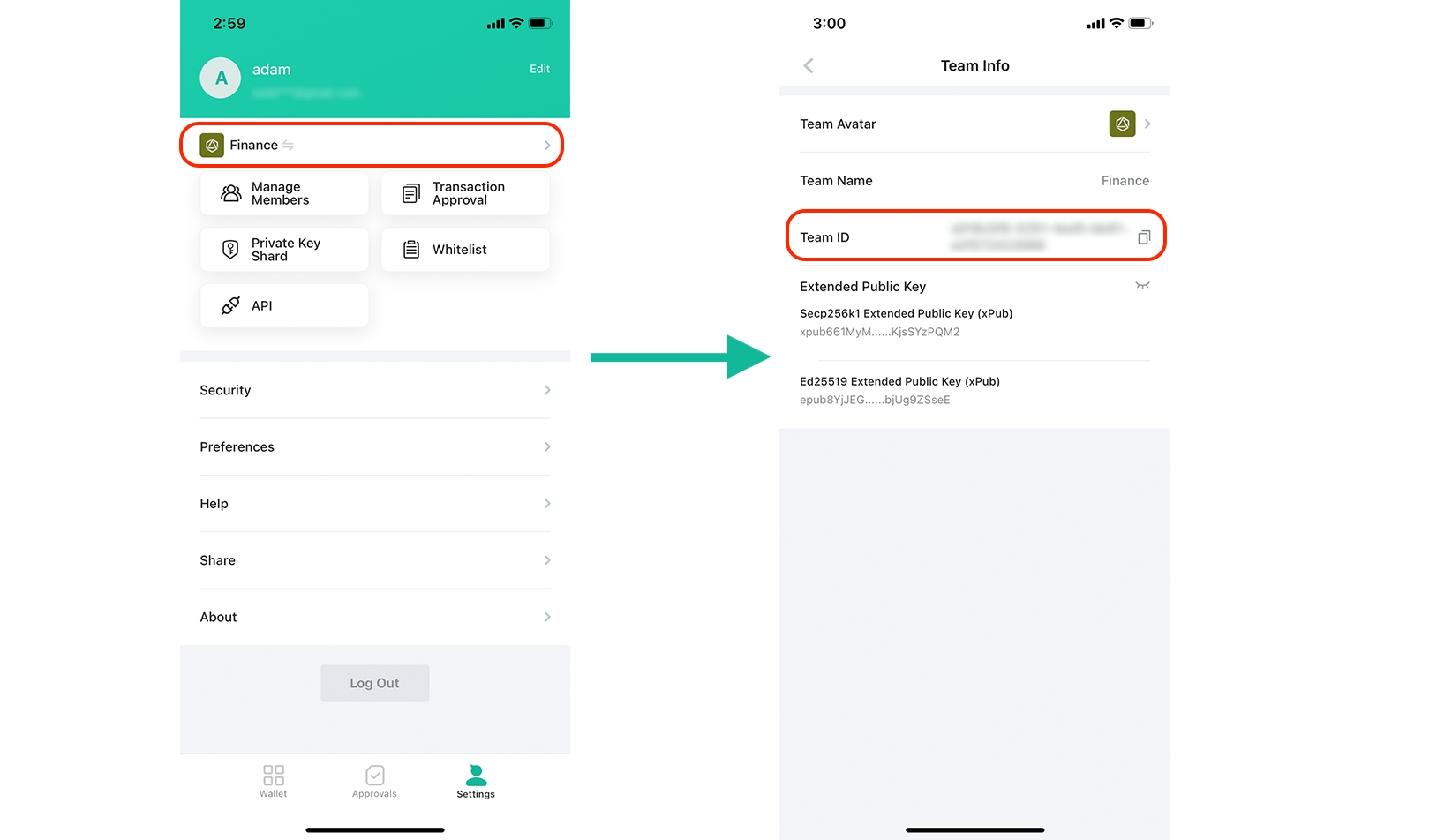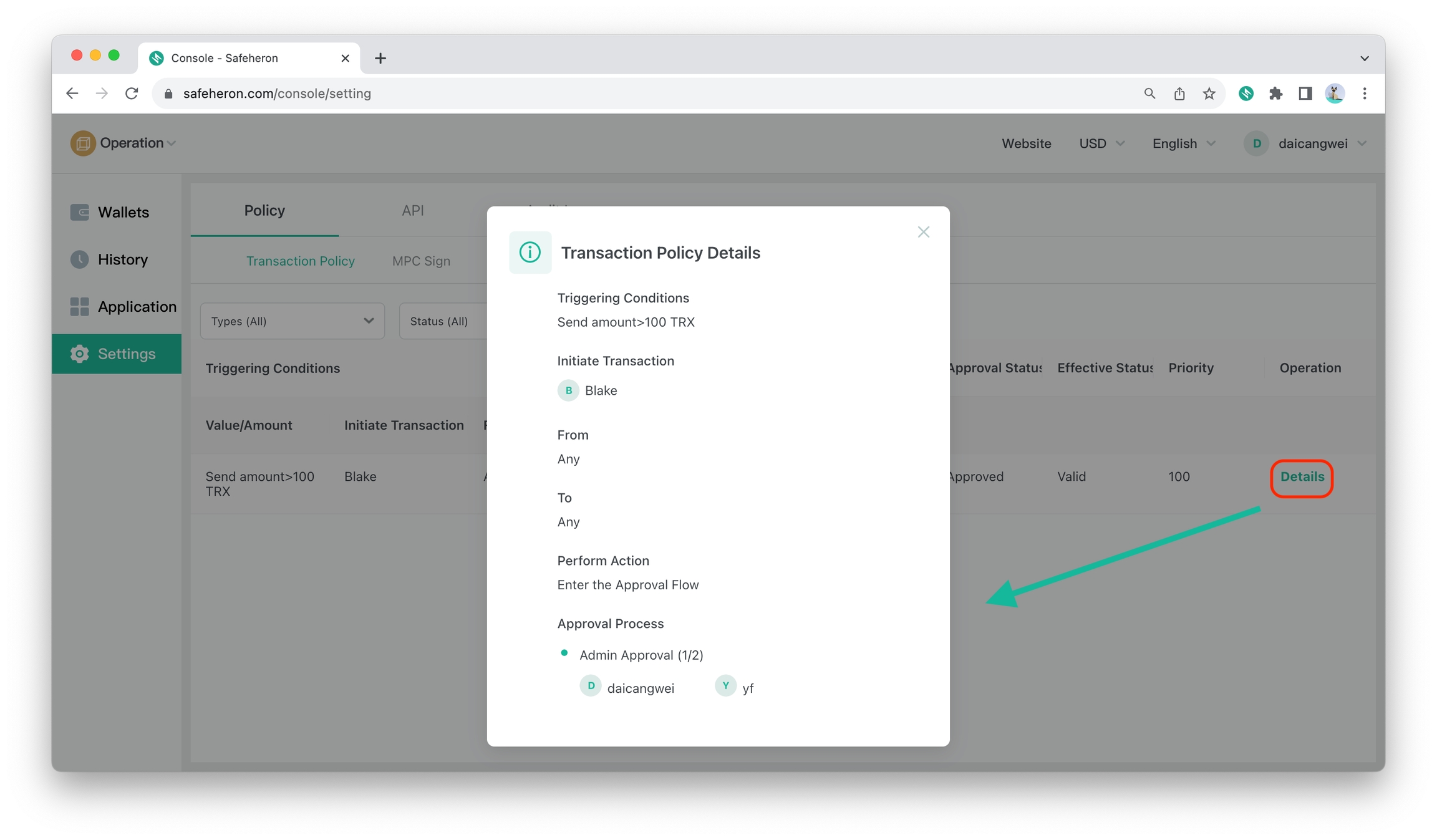Transfer Policy
What are transfer policies?
If a basic policy does not meet the needs of your business, you can use an advanced policy.
You can improve risk management practices of your business by setting up multiple transfer policies. For example, you can establish conditions that meet the following criteria:
Wallet 1: Sending BTC requires approval from either Member A or Member B, while sending ETH requires approval from both Members A and B.
Wallet 2: Transactions with values less than $1,000,000 USD requires approval from either Member A or Member B, while transactions with values exceeding $1,000,000 USD requires approval from both Members A and B.
Wallet 3: Transactions with values less than $1,000,000 USD are automatically approved by API Co-Signer 1, while transactions with values exceeding $1,000,000 USD requires approval from both Members A and B.
Wallet 4: Only Member C is permitted to initiate transfer transactions. The destination address must be one that is on the whitelist. Any transfer transaction requires the approval of either member A or member B.
Triggering conditions can be customized and combined to fit your business setting. See as follows:
| Dimension | Description |
|---|---|
Initiator | Limit transaction initiators. An initiator can be any team member with the |
From | Define wallets to be used for transfers using the following two options:
|
To | Define the destination address for any transfer through any of the following options:
|
Value | Convert the amount transferred into U. S. dollars based on the current exchange rate, and set a transfer limit using the following options:
|
Amount | Limit the number of transfers for a specified currency through the use of the following options:
|
Priority | Define the priority of policy matching. A larger value indicates a higher priority. When policies conflict, the policy with a larger value takes precedence. |
Approval Process | Define the action for duplicate transactions through the following options:
|
Only 1 selection can be made between value dimension and quantity dimension for each of the above parameters.
Once a transfer policy is set, a transfer transaction is prioritized using the advanced policy. If the advanced policy does not meet the transaction's triggering conditions but does meet the basic policy's triggering conditions, the transaction will then proceed using the basic policy approval process.
Why do we need policies?
Policies are used to smooth your business as to have different transactions match specific approval smartly governed by rules. Energize your business with team members playing their roles accordingly and timely.
You can define precise rules so that different transactions are processed differently. Policies can then be attached to a certain team. If you have multiple teams, then you can have specific policies for one team, and another set of policies for another one.
How to configure transfer policies?
If you need to add an advanced policy, please contact Safeheron's Support team. The Support team will assist you in configuring an advanced policy based on the specifics of your business.
🪄 Tips:
You can use the following template to send an email to support@safeheron.com.
Transfer Policy Email Template
Subject
Transfer Policy Request
Content
Team ID: <Your Team ID>
🪄 Tips: You can find your Team ID by navigating to Settingsand click your team name. See below.
Description of Business Setting: <Describe your business settings where you use advanced policies, so that Safeheron’s support team can verify whether the policy settings are reasonable and safe>
Example policies requested to add:
🪄 Tips:
You can customize the name of the node.
Each policy can have up to 3 approval nodes.
| Initiator | From | To | Value/Amount Limit | Priority | Approval Node 1 | Approval Node 2 | Approval Node 3 |
|---|---|---|---|---|---|---|---|
Any member with permission | Any | Any whitelisted address | Transfer value < $10,000 USD | 100 | Node Name: Admin Approval Approvers: A, B, C Approval Threshold: 2/3 | None | None |
Member A | Wallet 1 | Any whitelisted address | Transfer ETH < 100 | 200 | Node Name: Finance Approval Approvers: A, B, C Approval Threshold: 2/3 | Node Name: Risk Control Approval Approvers: A, B Approval Threshold: 1/2 | None |
Member A | Wallet 2 | Any | Transfer BTC > 100 | 300 | Node Name: Executive Approval Approvers: B, C Approval Threshold: 2/2 | None | None |
... | ... | ... | ... | ... | ... | ... | ... |
View transfer policies
The transfer policy is identified as a kind of advanced policy on Safeheron. Currently, the transfer policies can only be viewed on Safeheron Console.
Last updated


